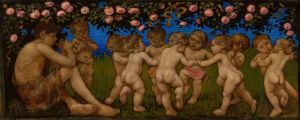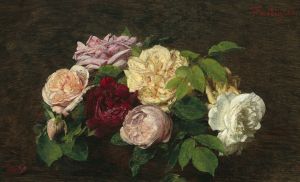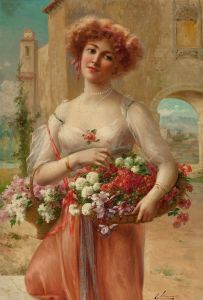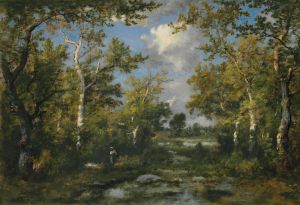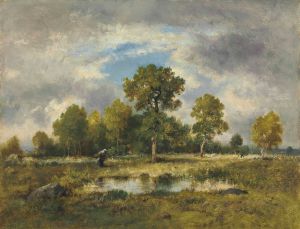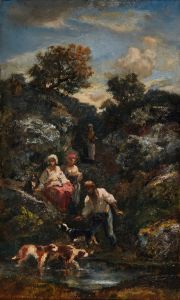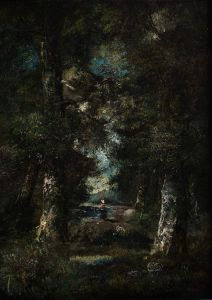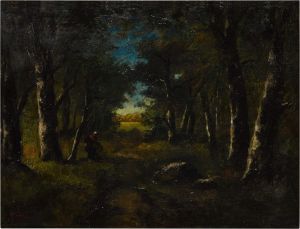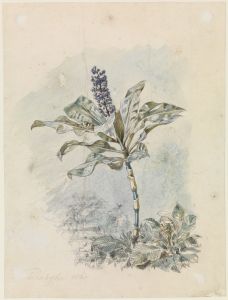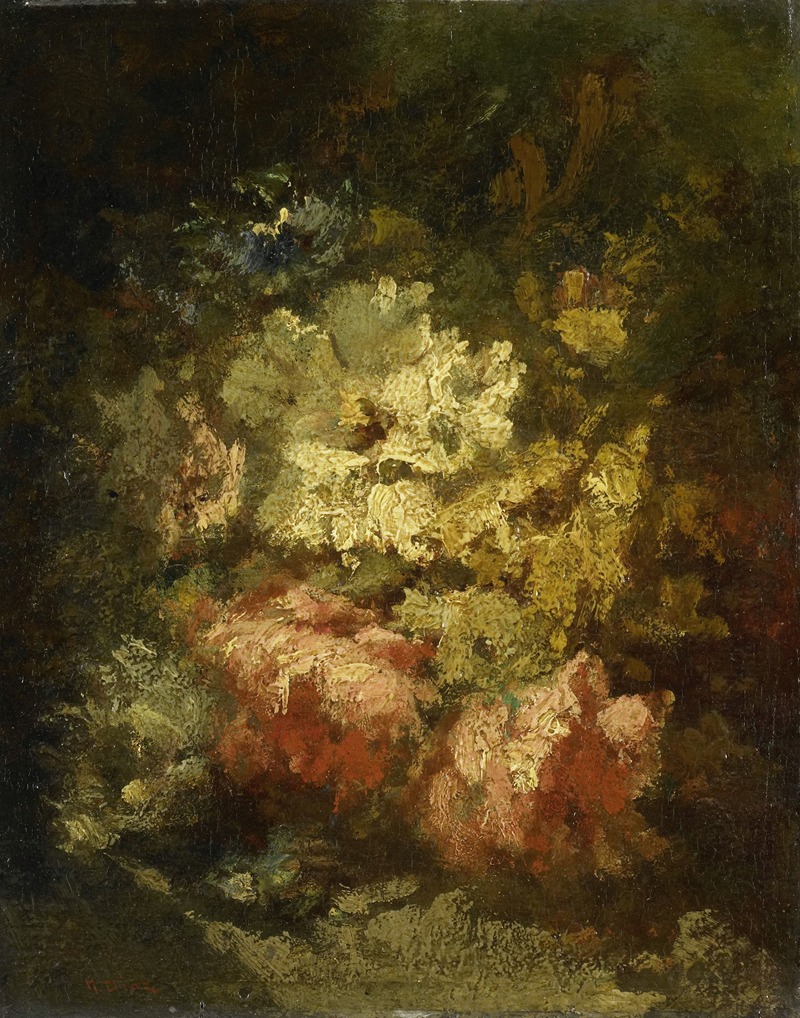
Still Life with White and Red Roses
A hand-painted replica of Narcisse-Virgile Diaz de La Peña’s masterpiece Still Life with White and Red Roses, meticulously crafted by professional artists to capture the true essence of the original. Each piece is created with museum-quality canvas and rare mineral pigments, carefully painted by experienced artists with delicate brushstrokes and rich, layered colors to perfectly recreate the texture of the original artwork. Unlike machine-printed reproductions, this hand-painted version brings the painting to life, infused with the artist’s emotions and skill in every stroke. Whether for personal collection or home decoration, it instantly elevates the artistic atmosphere of any space.
Narcisse-Virgile Diaz de la Peña was a prominent 19th-century French painter associated with the Barbizon School, a movement that emphasized naturalism and the depiction of landscapes and rural life. While Diaz de la Peña is primarily known for his landscape paintings, he also produced a number of still life works, including "Still Life with White and Red Roses."
"Still Life with White and Red Roses" is a fine example of Diaz de la Peña's ability to capture the delicate beauty of flowers. Although specific details about the creation date and the current location of this painting are not widely documented, it is consistent with the style and technique he employed in his still life compositions. The painting features a simple yet elegant arrangement of white and red roses, showcasing the artist's skill in rendering texture and color.
Diaz de la Peña's still lifes are characterized by their rich color palette and attention to detail. In "Still Life with White and Red Roses," he uses a combination of light and shadow to create depth and dimension, bringing the roses to life on the canvas. The contrast between the white and red roses adds a dynamic element to the composition, highlighting the natural beauty and diversity of the flowers.
The Barbizon School, with which Diaz de la Peña was associated, was known for its departure from the formalism of academic art and its embrace of realism and naturalism. While many of his contemporaries focused on landscapes, Diaz de la Peña's still lifes demonstrate his versatility as an artist and his keen observation of nature. His ability to capture the subtleties of light and color in his floral compositions reflects the influence of the Barbizon School's emphasis on painting en plein air, or outdoors, to capture the natural world more accurately.
Diaz de la Peña's work, including "Still Life with White and Red Roses," contributed to the broader movement in 19th-century art that sought to depict the beauty of the natural world in a more realistic and less idealized manner. His paintings are appreciated for their vibrant colors, intricate details, and the emotional resonance they evoke.
While "Still Life with White and Red Roses" may not be as widely recognized as some of Diaz de la Peña's landscape works, it remains an important part of his oeuvre, illustrating his mastery of still life painting and his ability to convey the ephemeral beauty of flowers. The painting serves as a testament to his artistic skill and his contribution to the development of naturalism in art.
Overall, Narcisse-Virgile Diaz de la Peña's "Still Life with White and Red Roses" exemplifies the artist's dedication to capturing the essence of nature through his art. It stands as a beautiful representation of the still life genre and reflects the broader artistic trends of the 19th century.






